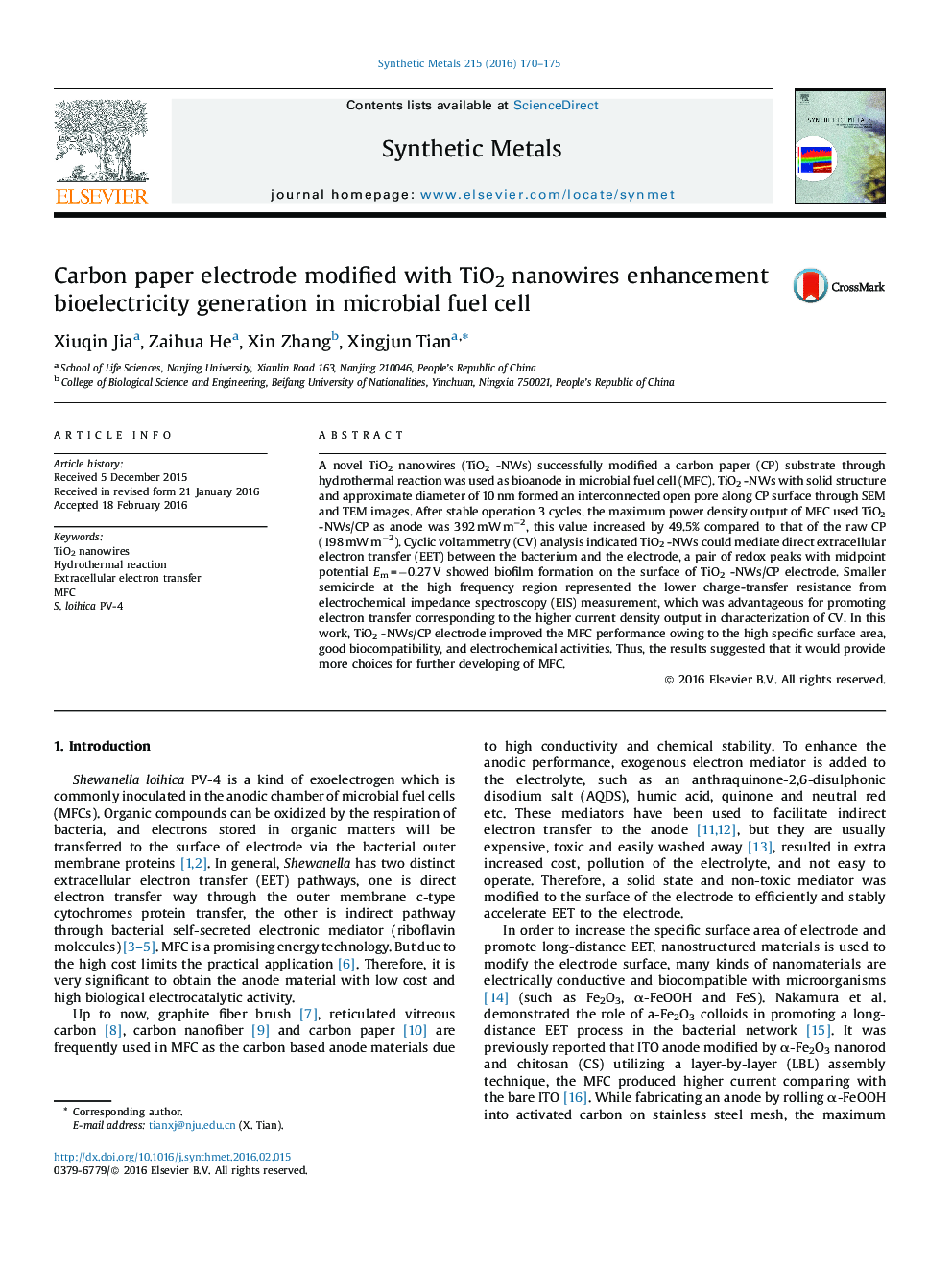| Article ID | Journal | Published Year | Pages | File Type |
|---|---|---|---|---|
| 1440265 | Synthetic Metals | 2016 | 6 Pages |
•A novel TiO2 nanowires with an intercrossed open porous structure modified carbon paper electrode was synthesized via hydrothermal reaction for bioanode in microbial fuel cell.•TiO2 nanowire has a super hydrophilic property and the larger specific surface area, on its surface formed a layer thick biofilm, accelerating the transfer of electrons.•The maximum power density of the MFC using TiO2 nanowires as bioanode increased by 49.5% compared to that of the raw carbon paper electrode.•This work developed a new bioanode of MFC, and TiO2 nanowires modified carbon electrode has also offered potential application in other fields.
A novel TiO2 nanowires (TiO2 -NWs) successfully modified a carbon paper (CP) substrate through hydrothermal reaction was used as bioanode in microbial fuel cell (MFC). TiO2 -NWs with solid structure and approximate diameter of 10 nm formed an interconnected open pore along CP surface through SEM and TEM images. After stable operation 3 cycles, the maximum power density output of MFC used TiO2 -NWs/CP as anode was 392 mW m−2, this value increased by 49.5% compared to that of the raw CP (198 mW m−2). Cyclic voltammetry (CV) analysis indicated TiO2 -NWs could mediate direct extracellular electron transfer (EET) between the bacterium and the electrode, a pair of redox peaks with midpoint potential Em = −0.27 V showed biofilm formation on the surface of TiO2 -NWs/CP electrode. Smaller semicircle at the high frequency region represented the lower charge-transfer resistance from electrochemical impedance spectroscopy (EIS) measurement, which was advantageous for promoting electron transfer corresponding to the higher current density output in characterization of CV. In this work, TiO2 -NWs/CP electrode improved the MFC performance owing to the high specific surface area, good biocompatibility, and electrochemical activities. Thus, the results suggested that it would provide more choices for further developing of MFC.
